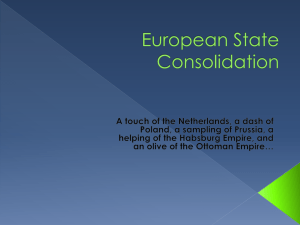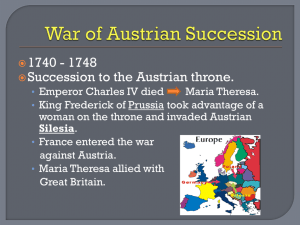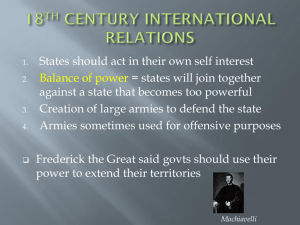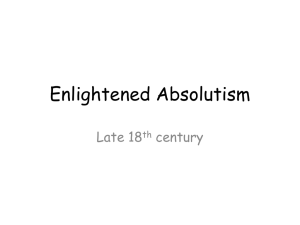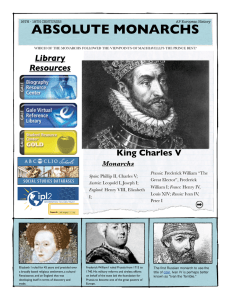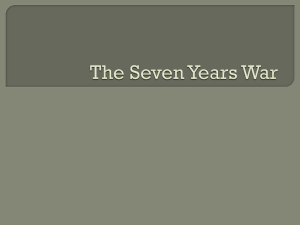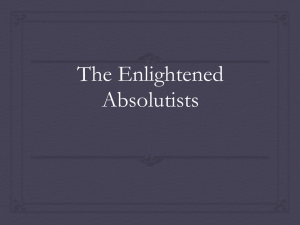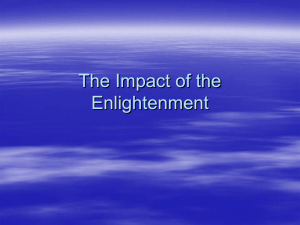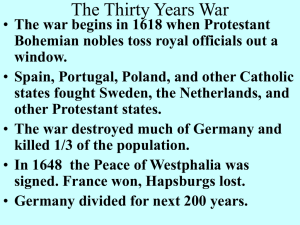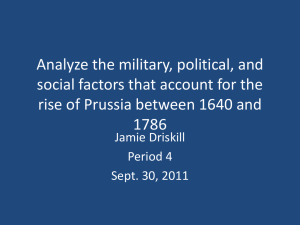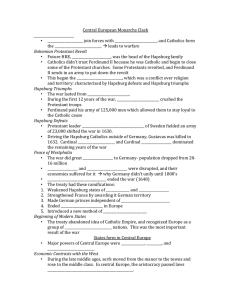The Age of Absolutism
advertisement
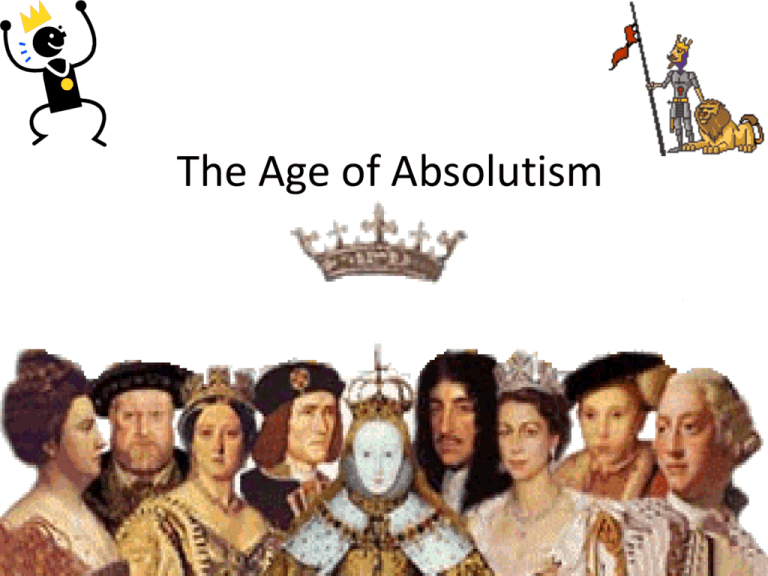
The Age of Absolutism 4 The Thirty Years’ War CAUSES Rival German princes held more power than the Holy Roman Emperor. Religion divided the Protestant north and the Catholic south and created a power vacuum. RESULTS The Peace of Westphalia ended the war with a general European peace. The war led to severe depopulation. France gained territory. The Hapsburgs were forced to accept independence of all of the princes of the Holy Roman Empire. Germany was divided into more than 360 states. The Netherlands and present-day Switzerland won independence. Austria • Despite loses during the 30 Years War, the Hapsburgs family formed a strong Catholic nation in Austria. They had strong leadership under Maria Theresa, 1740-1780. 4 Europe After the Thirty Years’ War Maria Theresa (cont’d) • The Pragmatic Sanction – A royal decree by Charles VI (1718) having the force of law by which Europe’s rulers promised not to divide the Hapsburg lands and to accept a female succession. • She made war with Prussia when they seized some of her land (Silesia). – Despite a lack of knowledge in politics, she was a good enough politician to get help from other nations (Great Britain and the Netherlands). Prussia • Became a powerful Protestant state. • North German Princes called Hohenzollern united their lands after the Peace of Westphalia. • They took the power of the other lords, known as Junkers, but gained their loyalty back by giving them powerful jobs in the army. • They centralized government as an absolute monarchy under Frederick William, who did this by forming one of the fiercest militaries ever seen… – “Prussia is not a a state which possesses an army, rather an army that possesses a state.” Prussia (continued) • Frederic William’s son, named Frederick II, who was treated harshly by his father, became a brilliant military leader, and was given the title Frederick the Great. • Austria and Prussia had both arisen as powerful states, and competed with each other for power over central Europe for a long time to come. Frederick the Great of Prussia The War of Austrian Succession (Prussia cont’d) • Frederick the Great invades the Austrian territory of Silesia. – Enormous desire to expand Prussian territory. – Silesia rich in natural resources. • Frederick the Great rejected the Pragmatic Sanction which justified Maria’s power. • Treaty of Aix-la-Chapelle – Officially recognized Prussia’s rise as an important European nation. The Seven Years’ War (Prussia Cont’d) • Maria Theresa was determined to get Silesia back. • She becomes allied to Russia, who’s Empress Elizabeth was an archenemy of Frederick the Great…we now have the tables set for another war. • Frederick the Great, by the war’s end, is able to keep most of Silesia.
